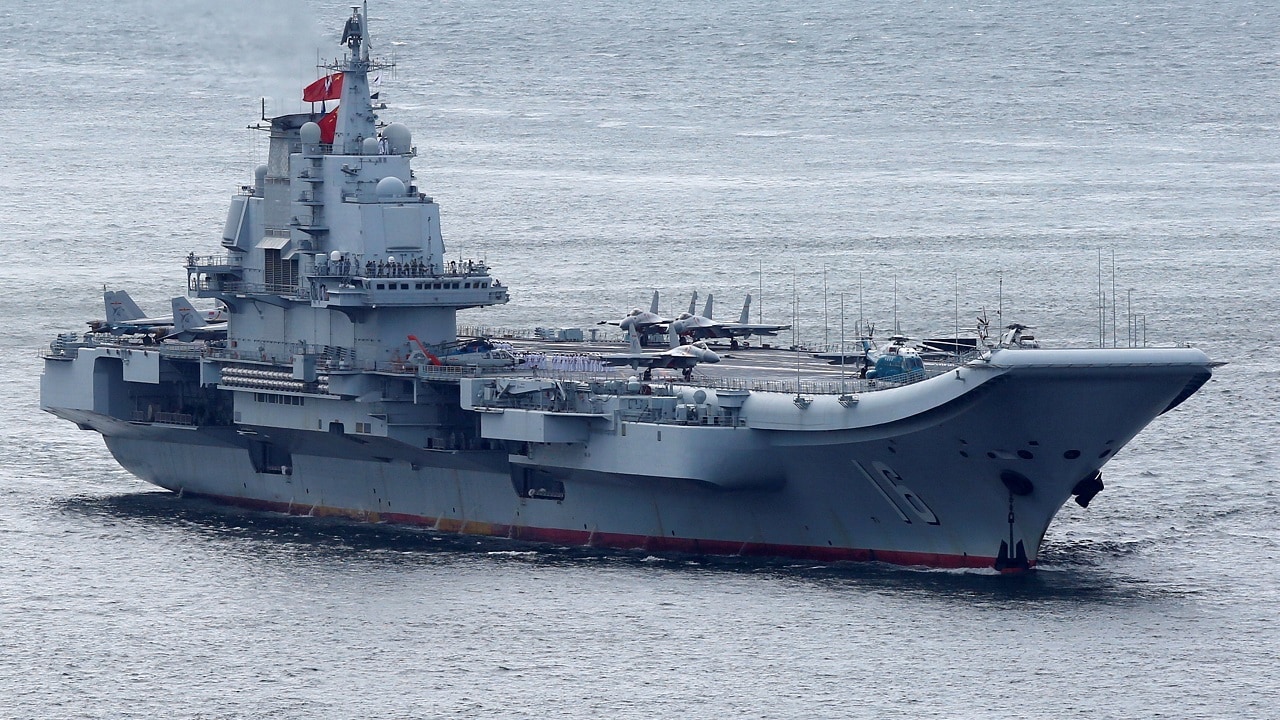China’s first aircraft carrier is doing more than sitting at home port, practicing aircraft maneuvers. The Liaoning is now leading a carrier strike group into the Western Pacific and launching scores of sorties. This coincides with a deployment of the U.S. Navy’s USS Abraham Lincoln carrier, which is leading its own battle group in the Philippine Sea.
What Is the Carrier Up To?
The Liaoning’s strike group includes five destroyers. Among them is the Nanchang, a Type 055 guided-missile warship that is one of the Chinese navy’s shiniest jewels. The patrol passed through the Miyako Strait, between the islands of Miyako and Okinawa, on May 2. This is a popular thoroughfare for the People’s Liberation Army Navy, or PLAN, when it heads to the Western Pacific. The battle group will later point south toward the Philippine Sea, the same area of operations the Abraham Lincoln is patrolling.
The PLAN says this is a routine training mission. The Liaoning hasn’t led a strike group on patrol since December. The coincidence with the Abraham Lincoln’s deployment is notable, however, and it is probably meant to keep the U.S. Navy and Japan’s Maritime Self-Defense Forces on their toes.
The Liaoning is conducting the business of aircraft carriers – launching and recovering fighter planes and other aircraft. Japanese Defense Minister Nobuo Kishi said on May 11 that the PLAN’s first aircraft carrier has conducted at least 100 sorties in the last six days. The Liaoning has shown in previous deployments that it can conduct flight deck operations in day and night.
“The move could be part of the Chinese military’s efforts to boost the carrier’s operational capability and enhance its ability to carry out operations in more distant maritime and aerial areas,” Kishi said.
History and Purpose of the Liaoning
The Liaoning is an old Soviet carrier. China bought it from Ukraine after the Soviet Union dissolved. China spent years renovating it, and in the process upgraded the carrier’s hull, radar, and electronics. The PLAN commissioned the Liaoning in 2012, and it was originally a training ship.
The Liaoning was first considered a heavy aircraft-carrying cruiser. It displaces 66,000 tons, leaving it smaller than American carriers. Vessels such as the USS Ronald Reagan displace 97,000 tons. The Liaoning is further limited by its underpowered steam turbine engines. With eight boilers and four shafts, these generate a top speed of just 20 knots.
The Liaoning deploys 24 Shenyang J-15 fighters along with Z-9 and Z-18 utility and transport helicopters. The Z-18F serves as an anti-submarine warfare helicopter. The Liaoning features a relatively antiquated ski-jump launching system. The vessel is protected by surface-to-air missiles and a close-in weapons system.
China has accomplished a significant feat with the Liaoning. It is projecting power and sending aircraft on patrolling missions. It took many years for their first carrier to become what it is today, and the PLAN has been patient and methodical in preparing their carrier for modern warfare. The Liaoning is thus more than a training vessel. China is not afraid to sail it near American strike groups. Look for it to become a major part of PLAN tactics and strategy moving forward.
Now serving as 1945’s Defense and National Security Editor, Brent M. Eastwood, PhD, is the author of Humans, Machines, and Data: Future Trends in Warfare. He is an Emerging Threats expert and former U.S. Army Infantry officer. You can follow him on Twitter @BMEastwood.

